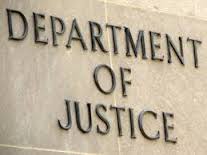Campaigning for Self-Reporting and Calculation of Incentives (Part I of II)
 Just to add to the cacophony of voices campaigning during this primary season, DOJ, SEC, FINRA, and CFTC officials launched their own campaign promoting recent initiatives to increase corporate self-reporting of potential violations. After months of announcements, which were preceded by internal wrangling and bureaucratic leaks, DOJ has put in place its new initiative – the Yates memorandum to focus on individual culpability and a Pilot Program to encourage voluntary disclosures.
Just to add to the cacophony of voices campaigning during this primary season, DOJ, SEC, FINRA, and CFTC officials launched their own campaign promoting recent initiatives to increase corporate self-reporting of potential violations. After months of announcements, which were preceded by internal wrangling and bureaucratic leaks, DOJ has put in place its new initiative – the Yates memorandum to focus on individual culpability and a Pilot Program to encourage voluntary disclosures.
DOJ’s campaign has begun and the jury is still out on whether this initiative will significantly increase voluntary reporting. Given the material they have to work with and the possibility of a 50 percent reduction, along with a promise of no independent monitor, DOJ has a tough sell.
When considering these initiatives (or for that matter as a lesson in life), it always helps to put yourself in the position of the person you are trying to influence. I always say – look at the issue from behind the person’s eyes. It is important to understand what a person is thinking.
A company has uncovered a bribery scheme – it may involve a single country or region. The company has preliminary indications that the investigation may be broad and involved high-ranking officers and employees in a region or a particular country.
The company’s board and executive leadership has to come to terms with the reality – this matter, if disclosed, will be significant. The scandal could lead to reputational damage. Assuming that there is no independent obligation to disclose the matter under federal securities laws, i.e. potential legal liability does not have to be disclosed as a “material” event, the board and senior executives have to decide on one of two courses – disclose to the government the misconduct and cooperate in the investigation of the company and individuals, or remediate the matter without disclosure, implement enhanced compliance procedures, and document everything in case the government learns about the conduct.
There are three possible outcomes in this scenario.
- The company discloses and cooperates with the government, leading to a fine/penalties, along with prosecution of two individuals responsible for the matter. Legal and compliance costs are fairly high but the company can expect to earn a 50% discount from the bottom of the guideline range, which comes out to a discount of $25 million from the bottom of the range (approximately $50 million). No compliance monitor is imposed in this situation.
- The company decides not to disclose to the government, and spends a significant amount of money to investigate and remediate the compliance program. The company fires those officials who are responsible for the conduct. The company sits tight with a valid story to tell if the government learns about the behavior. The chance of a whistleblower or someone else (who was not involved in the misconduct) reporting it to the government is 1 out of 10.
- The company decides not to disclose to the government like number 2 above. However, within a year of implementing corrective measures and completing its investigation, the government learns about the misconduct and sends inquiries to the company. In response, the company fully cooperates. As set out in DOJ’s Pilot Program, the company can only earn as much a 25% discount from the bottom of the range, which is equal to $12.5 million and has to accept a settlement amount of $37.5 million. The company’s decision not to disclose cost $12.5 million. The company may also be required to hire and pay for an independent compliance monitor which can cost the company in the tens of millions in fees and expenses.
Given the outcomes and the incentives, I am not sure that every company, as a rational actor will choose the first option and disclose the conduct.
 But there is also an intangible factor at work – corporate leaders who are committed to acting with integrity may feel that reporting misconduct is consistent with the company’s ethical culture. A company may not want to engage in “gamesmanship” to avoid self-reporting, playing at the margins by fixing a problem and implanting enhanced compliance elements. There is a significant cost here to a company’s culture that needs to be taken into account.
But there is also an intangible factor at work – corporate leaders who are committed to acting with integrity may feel that reporting misconduct is consistent with the company’s ethical culture. A company may not want to engage in “gamesmanship” to avoid self-reporting, playing at the margins by fixing a problem and implanting enhanced compliance elements. There is a significant cost here to a company’s culture that needs to be taken into account.
The decision reached by a board and senior executives in this hypothetical situation may say more than we think about a company’s culture and commitment to an ethical culture.















